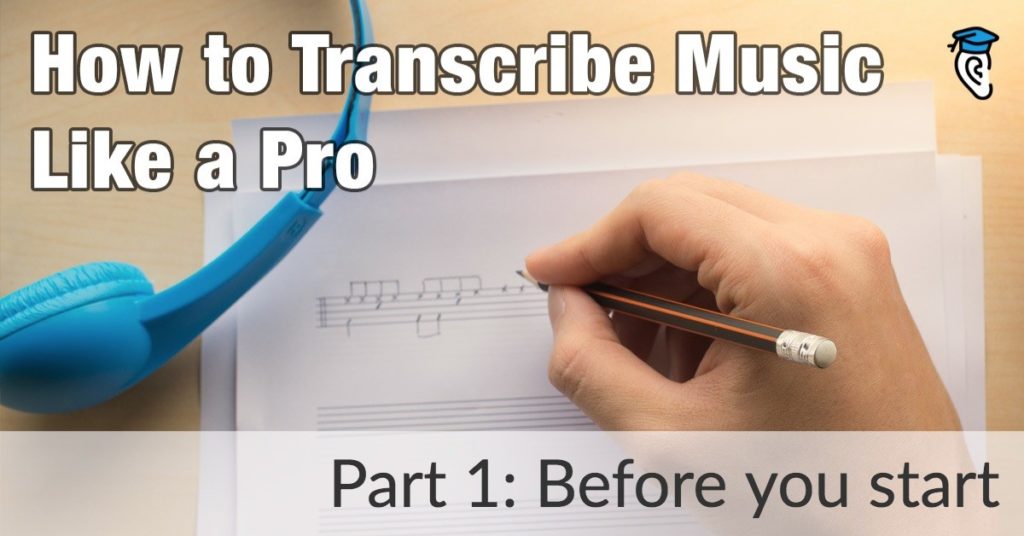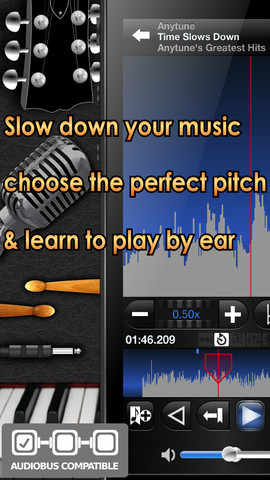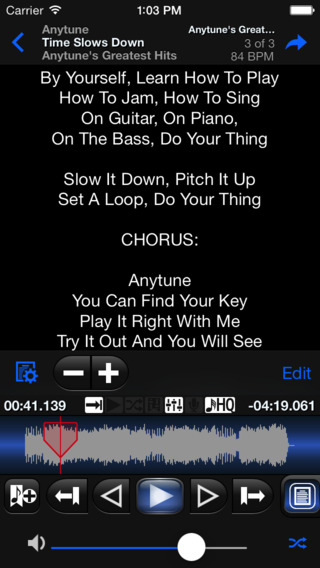You hear a favorite tune on the radio and jump to your instrument, trying to pluck out the melody. You try several times, and maybe you get a few notes quickly scrawled out on some scrap paper, but you don’t know how to figure out the entire melody, let alone the chord progressions and drum part.
Frustrated? Don’t worry. Read on and in this new series we will show you how to transcribe music like the pros.
What is Transcribing?
When you listen to a tune and try to write out what you hear, you are transcribing music. This is an ancient practice that goes back before the days of monks cranking out hit tunes. Back then transcriptions looked like random dots with no chords or real rhythm. Today sheet music includes everything from chords and rhythm charts to the melody.
Below is a sample transcription. In the full version, indications regarding swing tempo and a jazz rhythm are included. Listen to the short audio and follow along in the score excerpts. What elements are missing? Which elements are included? Does the transcription reflect the song?
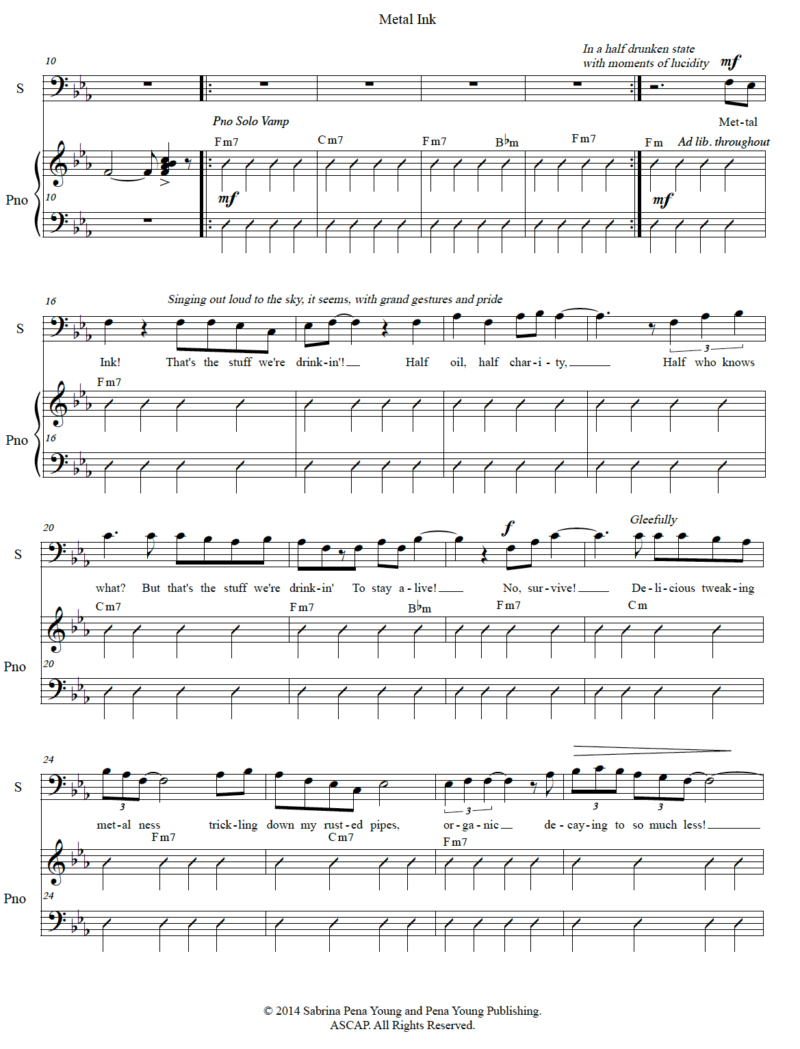
What You Will Learn in This Series
Learning how to transcribe is a process, one that you probably have tried starting before. In this series we will guide you through each step of the process. Some of what you will learn includes:
- How to find the key of a tune
- Transcribing the drum/rhythm parts
- Figuring out the basic chord progression of a tune
- Learning about the lead instruments and melody
- How to conquer long songs
Through the entire series you will have exercises and songs to work on. We will use a simple instrumental tune as our basic example. Additional audio examples and exercises will help you fine tune your skills. You will also have a chance to work on transcribing lyrics with easy examples.
In this series you will learn how to transcribe this instrumental track, step-by-step:
Transcription Tools and Software
One of the first questions many musicians ask themselves when starting out in transcription is “What is the best program to transcribe music?”
It’s true that there are many tools that you can use to transcribe music, but these should be seen as aids to help you transcribe rather than magic tools to do it for you. Some tools will help you play back audio while others will help with elements like pitch. During this series you will be introduced to several tools that you can use for transcription. Let’s take a look at some of the most popular ones before we get started.
Audacity (Audio Editor)
Audacity is a free program that has been the mainstay for indie musicians for a decade. While just a simple music editing program, Audacity allows you to playback audio over and over again in a user-friendly setting.
Audacity allows you to play back and scrub audio. The free download is quick to install and the program is easy to use:
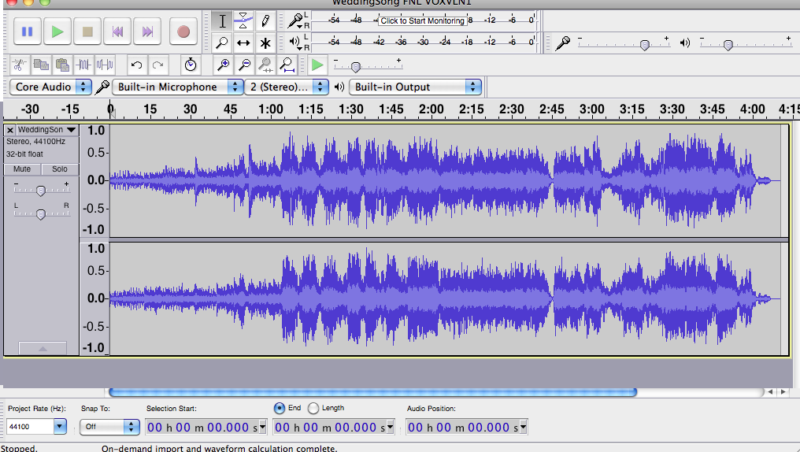
DAWs (Digital Audio Workstations)
Use the audio software that you normally mix with or even the software included with your computer. This can be anything from Garageband (also available for iOS and Windows) and Logic Pro to ProTools. Even iTunes can be used for transcribing, though these other programs allow more customizable options plus additional tools to help you transcribe audio.
You can use Garageband to quickly loop a section of audio when transcribing music:
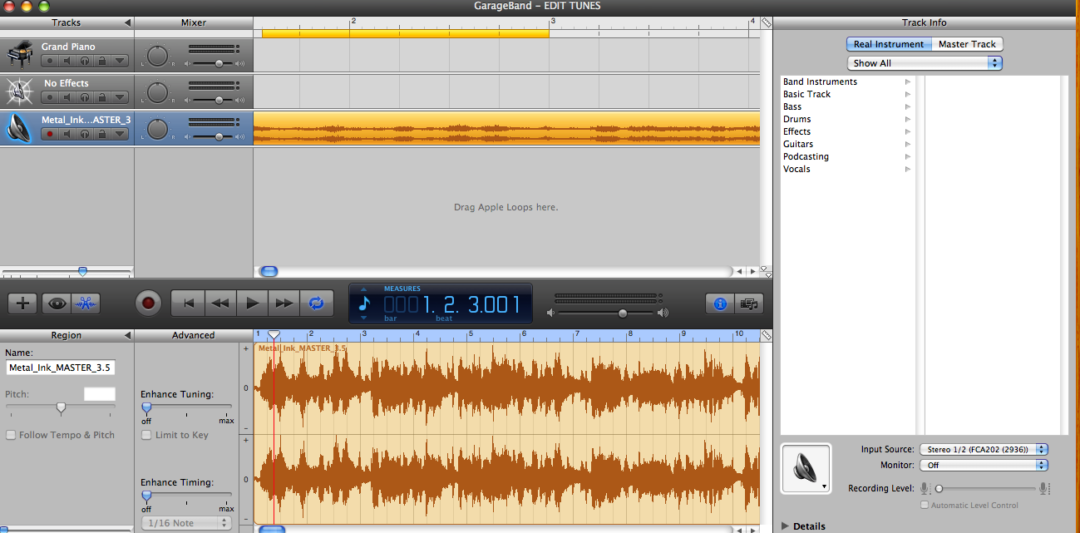
Logic has various pitch tools that can help you transcribe quicker, plus the ability to loop audio and isolate specific parts:
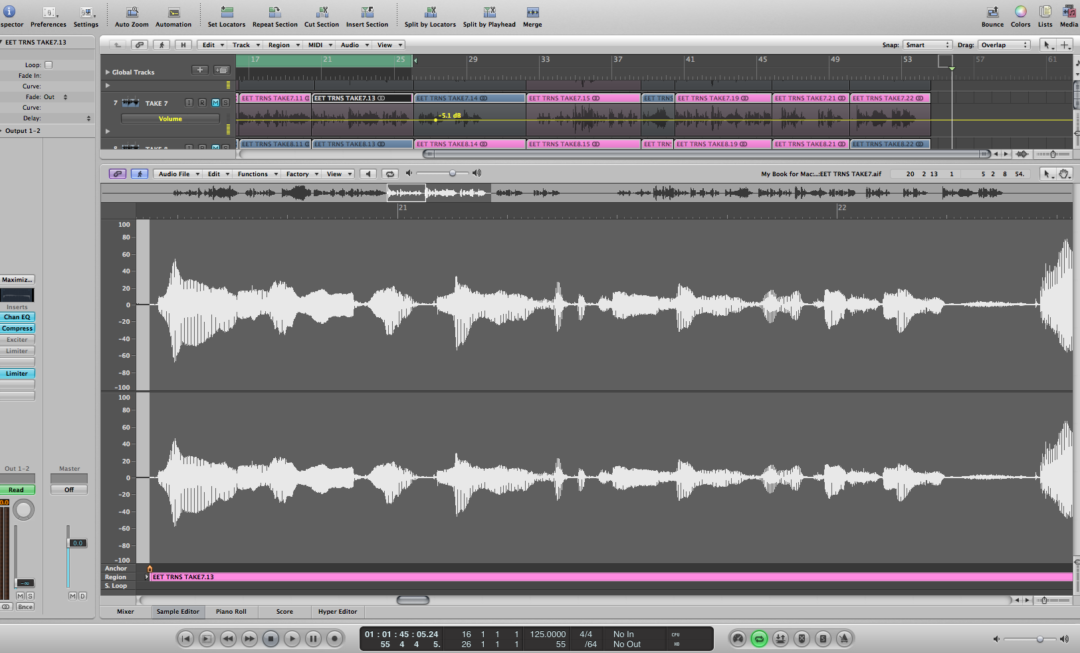
Transcription Tools
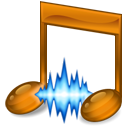 There is even dedicated software to help you transcribe. One of the most popular tools is called Transcribe! which allows easy playback and analysis for transcription on Windows.
There is even dedicated software to help you transcribe. One of the most popular tools is called Transcribe! which allows easy playback and analysis for transcription on Windows.
![]() On Mac and iOS mobile devices, Anytune is a powerful and versatile transcription tool, offering a variety of ways you can pick apart and dive into the track you are transcribing.
On Mac and iOS mobile devices, Anytune is a powerful and versatile transcription tool, offering a variety of ways you can pick apart and dive into the track you are transcribing.
(iPhone/iPad)
Don’t miss our special contest to win a free copy of Anytune! See below for details…
Some web-based tools like Scorecloud will even attempt to automatically transcribe single lines.
More tools will be discussed throughout the series as we approach each step.
Why Should I Learn to Transcribe Music?
Learning how to transcribe music works extensively on your musicality. Training your ears to hear each separate component of a song helps you in your own performance and writing. When you can quickly isolate a melody or chord progression, or even clap out the drum part, you will find that music making improves. Transcribing music is a musical skill that works on several aspects of music, from rhythm to harmony.
Many musicians learn from the greats, even if the greats are just on the radio or YouTube. Copying great performers, singers, and songwriters teaches you the nuances of great musicianship. By transcribing yesterday and today’s hit tunes, you will learn what makes these songs great through careful listening.
Transcribing doesn’t have to be hard!
Think back to the first time you picked up your instrument or tried to sing a tune. I still remember what it felt like tapping out basic quarter note rhythms on an old table that first week of school band. If transcribing music is currently difficult for you, that’s okay!
It is hard for everyone at first, and sometimes even experts get stumped. That’s why we are breaking down the process. Like any musical skill, transcription gets easier as you practice. In this series we will make it simple for you.
So let’s do this! Get ready to explore music transcription and learn how to truly transcribe music like a professional.
Giveaway Contest!
As mentioned above, Anytune is a fantastic tool to help you transcribe music more easily.
The team behind this excellent software have kindly provided some prizes to accompany our new series, How to Transcribe Music like a Pro.
- To unlock the Pro features of the Anytune iOS app simply follow along with this series and collect the letters of the special unlock code. Then follow the instructions here to redeem the code.
Your first letters: _ _ A _ _ _ O _ _ _ _ _ _
Look out for part two of this series to pick up two more letters! - We also have 6 copies of Anytune Mac to give away. For a chance of winning, post a comment on our Facebook page here before the series ends. We’ll pick 6 random entrants to win on August 30th!
Our thanks to Anytune for providing these prizes. And good luck!

